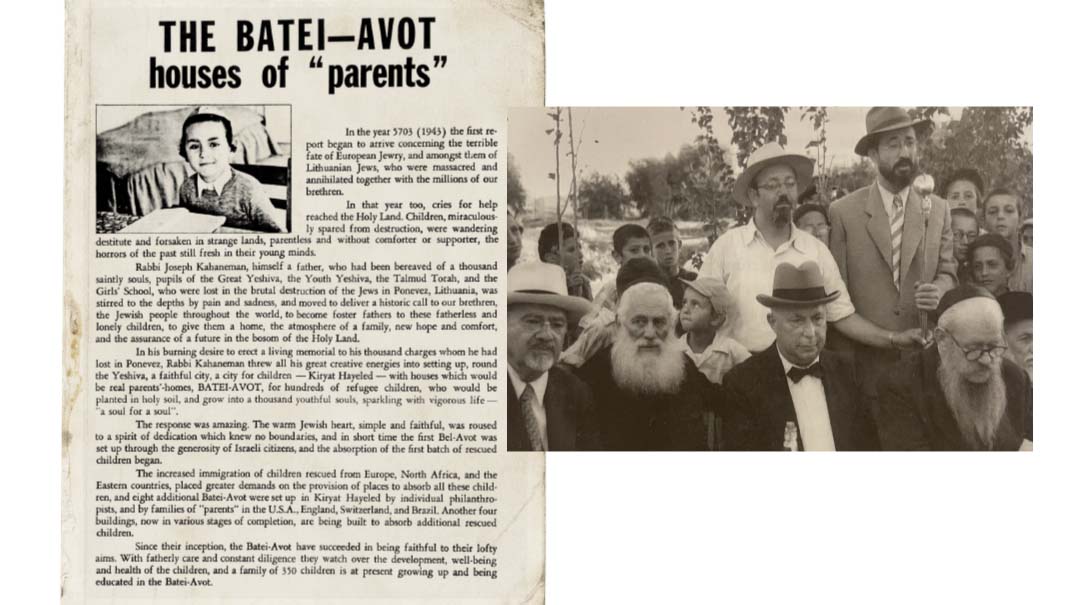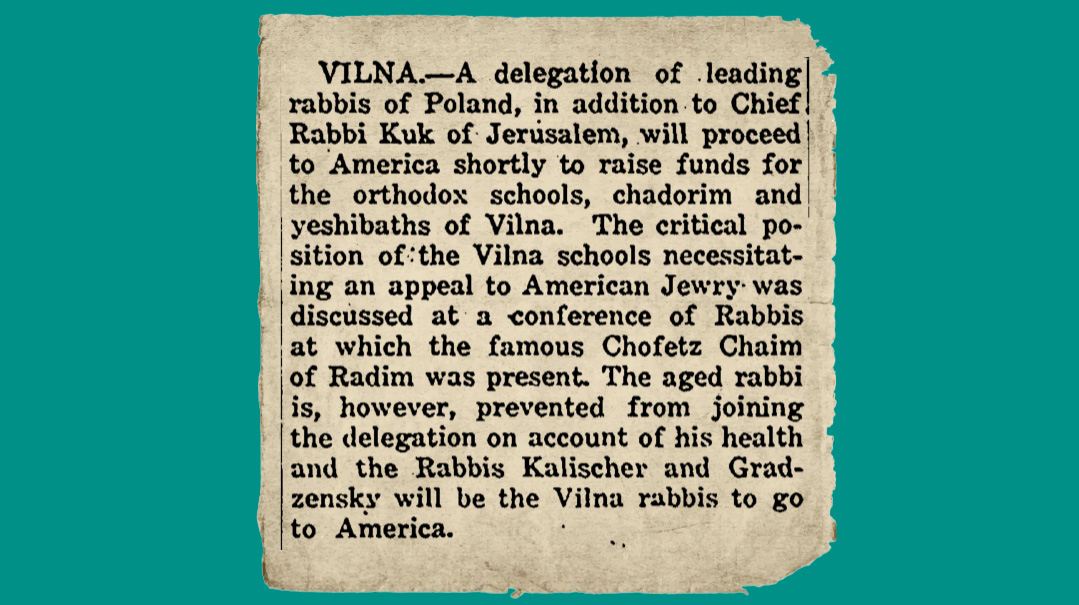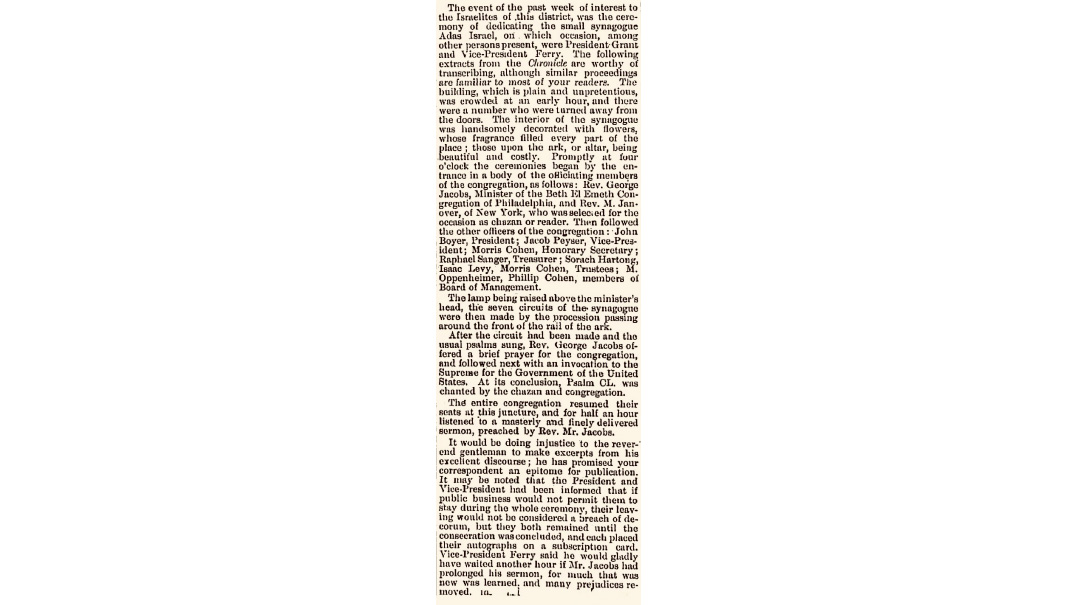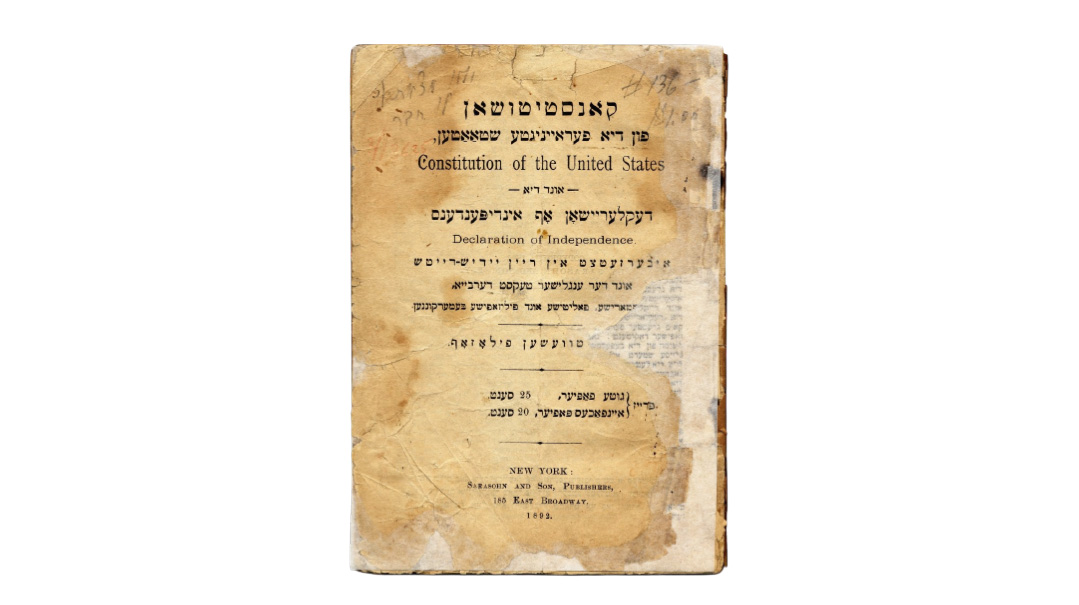Home Sweet Home
| November 30, 2021"These are now our children, the children of the entire Jewish nation"

Title: Home Sweet Home
Location: Bnei Brak
Document: Ponevezh brochure
Time: 1945
On Asarah B’Teves 1945, thousands of people gathered in central Tel Aviv to pay homage to the memory of the six million kedoshim who had perished in the Holocaust. For the task of putting into words the collective sense of grief, longtime Tel Aviv mayor Israel Rokach chose Rav Yosef Shlomo Kahaneman, the Ponevezher Rav.
“One would have to be the prophet Yirmiyahu to give expression to the heaviness that is in our hearts,” the Rav cried. “Who can describe the desolation of our people? Who can give voice to the sadness we feel?”
In that moving and dramatic eulogy, the Rav pointed out that mourning, weeping, and even lighting six million candles would hardly diminish the monumental loss.
“What we can do for their sake”, he cried out, “is to become fathers and mothers to the handful of children who have somehow survived this great tragedy. These are now our children, the children of the entire Jewish nation. Let us build homes for them — not mere orphanages, but family homes, parents’ homes, ‘batei avos,’ where all of us can be faithful and loving parents to these orphaned children.”
The Rav spoke from the depths of a burdened heart. Had he not lost his own wife and three of his four children in Ponevezh? Had he not lost 1,000 holy children — in a sense, “his children” — who learned in the institutions of Ponevezh, to whom he had been the spiritual shepherd?
And he spoke not as one who merely preached, but as one who had practiced. In 1943, while the Ponevezh Yeshivah in Bnei Brak was in the very earliest stages of construction, the Rav had taken in some 40 of the famous “Yaldei Tehran,” Polish orphans who had managed to reach the Holy Land by way of Iran. They lived alongside the early talmidim in a home the yeshivah used as its original “dormitory.”
The Ponevezher Rav envisioned an entire institutional network, covering the whole gamut of physical and spiritual needs for rebuilding the Jewish People following the devastation of the Holocaust. Among the myriad institutions were the orphanages, or “batei avos,” providing homes for child survivors of the Holocaust, as well as for recent immigrants from North Africa and the Middle East. These homes provided for their physical welfare, including health clinics and recreational facilities. It also created a warm environment, providing a social, educational, and religious framework for the orphans.
The Ponevezher Rav’s diverse institutions ran an ever-increasing budget, and he famously spent the majority of the year traveling the world to fundraise for construction and upkeep. In an attempt to ensure long-term stability for the institution’s finances, he conceived of the idea of having “netzivim,” essentially daily benefactors, who would sponsor a day in the life of the batei avos on an annual basis.
There was even an attempt to have their sponsorships invested in a fund that would perpetuate their gifts beyond the donors’ lifetimes. He drafted a dedicated cadre of netzivim who shared his vision and contributed to the cause. Some of the Rav’s devoted “officers” included legendary Jewish philanthropists like Charles Bendheim, Henry Kraushar, and Samuel Kaufman.
Royal Officers
In Shlomo Hamelech’s court, the Netzivim were the officers responsible for the provisions of the royal household. Rav Kahaneman’s Ponevezh netzivim would also act as providers for modern Jewish “royalty.”
Holocaust Remembrance Day
Prior to there being an officially recognized Holocaust Memorial Day, Jewish communities in the United States and Eretz Yisrael would use the fast day of Asarah B’Teves as a day of memory, Kaddish, and Mishnayos, especially for those victims whose yahrtzeit was unknown. The Chief Rabbinate of Israel eventually proclaimed Asarah B’Teves as “Yom HaKaddish Haklali,” to recite Kaddish in memory of the kedoshim of the Holocaust.
(Originally featured in Mishpacha, Issue 888)
Oops! We could not locate your form.







